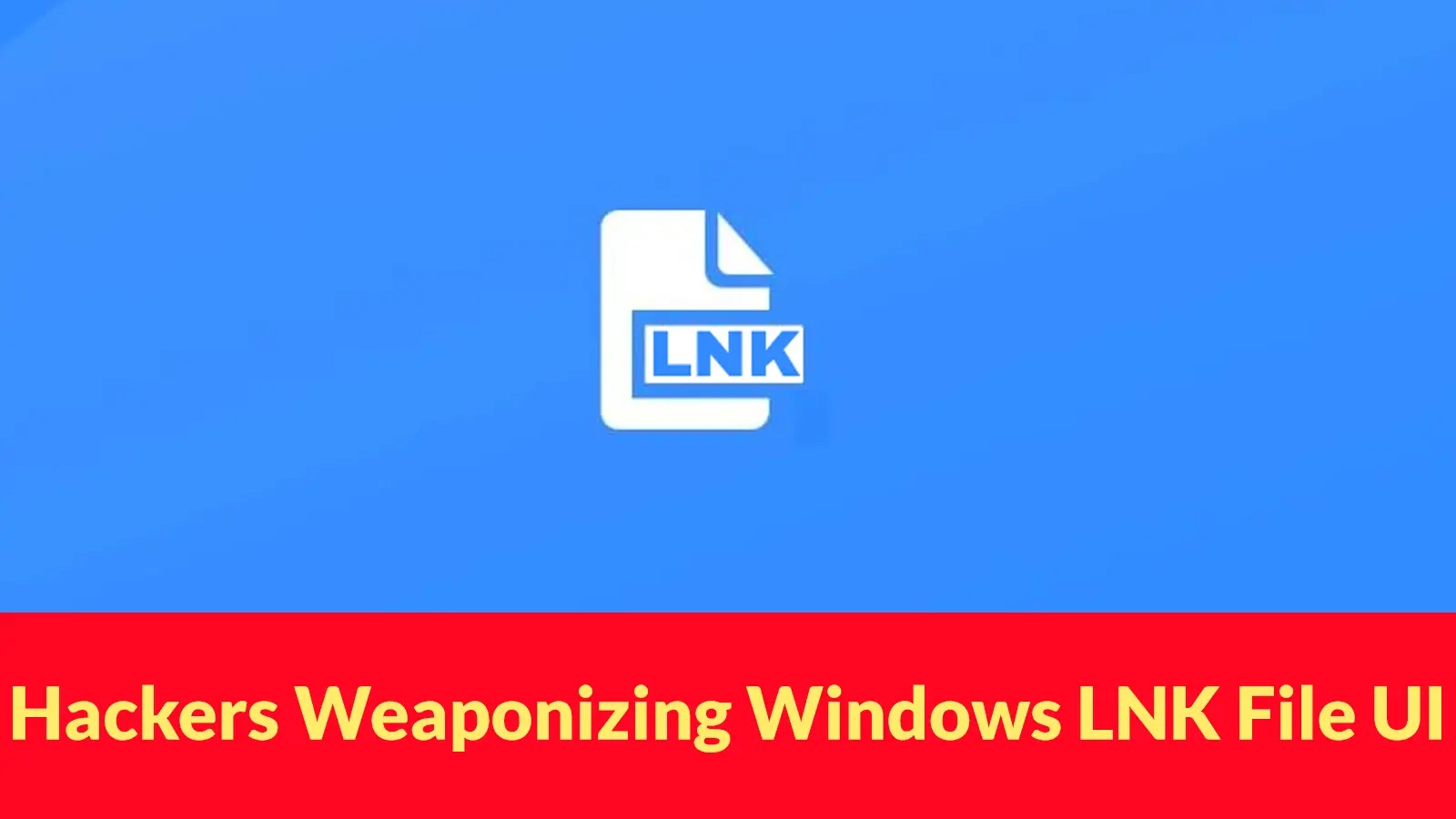
Hackers Weaponizing Windows LNK File UI Misrepresentation Remote Code Execution Vulnerability
A disturbing trend has emerged in the cybersecurity landscape, with sophisticated threat actors now weaponizing a long-standing vulnerability within Windows shortcut files (LNK files) to execute remote code. This isn’t theoretical; we’re witnessing active exploitation by a Chinese-affiliated group, UNC6384, targeting high-value diplomatic entities across Europe. Understanding this attack vector and implementing robust defenses is no longer optional – it’s a critical imperative for global security.
The Anatomy of the LNK File UI Misrepresentation Vulnerability
The vulnerability at the heart of these attacks revolves around how Windows handles and displays information within LNK files. Traditionally, LNK files are simple shortcuts to other files or programs. However, when crafted maliciously, they can be designed to misrepresent their true nature to the user, often appearing as innocuous documents or folders while secretly executing arbitrary code.
This particular flaw, often manifesting as a “User Interface Misrepresentation” vulnerability, tricks users into believing they are opening one type of file, when in reality, they are triggering a hidden command or script embedded within the LNK file itself. This bypasses typical security awareness, as the user interface provides no clear indication of the danger.
UNC6384: A Growing Espionage Threat
Cybersecurity researchers at Arctic Wolf have identified UNC6384 as the primary perpetrator of this sophisticated campaign. This Chinese-affiliated threat actor has significantly evolved its operational capabilities and expanded its geographic reach. Between September and October 2025, their activities focused on prominent European diplomatic targets, including entities in:
- Hungary
- Belgium
- Serbia
- Italy
- The Netherlands
The methodical targeting of diplomatic missions underscores UNC6384’s objectives: likely cyber espionage aimed at gaining access to sensitive political, economic, or strategic information. Their adoption of this LNK file exploit demonstrates a commitment to leveraging novel and effective attack vectors to achieve their goals.
How the LNK File RCE Attack Unfolds
The typical attack chain involving this LNK file vulnerability often follows these steps:
- Initial Compromise: The malicious LNK file is delivered through a variety of social engineering tactics, such as spear-phishing emails disguised as legitimate correspondence, or through compromised websites.
- User Interaction: The target is lured into clicking the seemingly benign LNK file. Due to the UI misrepresentation, they perceive it as a regular document, PDF, or folder.
- Remote Code Execution (RCE): Upon clicking, the embedded malicious code within the LNK file is executed. This can lead to a wide array of outcomes, including:
- Installation of backdoors or remote access trojans (RATs)
- Exfiltration of sensitive data
- Lateral movement within the compromised network
- Further payload delivery
- Persistence: The attackers establish persistence mechanisms to maintain access to the compromised system and network.
Remediation Actions for LNK File Vulnerabilities
Defending against these sophisticated LNK file exploits requires a multi-layered approach. Here are actionable steps organizations should implement:
- Employee Awareness Training: Regularly educate employees on the dangers of phishing, suspicious attachments, and the importance of verifying file types and sender legitimacy, even if an attachment appears harmless. Emphasize scrutinizing file extensions.
- Disable LNK File Previews: Configure Windows to disable previews for LNK files, which can sometimes reveal misleading icons before a user clicks.
- Implement Robust Email Security: Utilize advanced email gateway solutions with sandboxing capabilities to detect and quarantine malicious attachments, including weaponized LNK files, before they reach user inboxes.
- Endpoint Detection and Response (EDR): Deploy EDR solutions that can monitor for suspicious process execution, file creation, and network connections that might indicate an LNK file exploit.
- Patch Management: While often associated with user interaction, ensuring Windows operating systems are fully patched can mitigate other vulnerabilities that attackers might chain with an LNK file exploit.
- Application Whitelisting: Implement application whitelisting to prevent unauthorized executables from running on endpoints, significantly limiting the impact of successful remote code execution.
- Network Segmentation: Segment networks to restrict lateral movement if a system becomes compromised.
Detection & Analysis Tools
Effective detection and analysis are crucial for identifying and responding to LNK file-based attacks. Here are some relevant tools:
| Tool Name | Purpose | Link |
|---|---|---|
| YARA Rules | Signature-based detection of malicious LNK file patterns | https://yara.readthedocs.io/ |
| Cuckoo Sandbox | Automated malware analysis environment for dynamic execution and behavioral analysis | https://cuckoosandbox.org/ |
| Any.Run | Interactive online malware analysis sandbox for quick threat assessment | https://any.run/ |
| Sysmon | Monitors and logs system activity enabling detection of suspicious process creation and file operations | https://learn.microsoft.com/en-us/sysinternals/downloads/sysmon |
Conclusion: Heightened Vigilance is Key
The active weaponization of the Windows LNK file UI misrepresentation vulnerability by groups like UNC6384 serves as a stark reminder of the persistent and evolving threat landscape. The ability of attackers to leverage seemingly innocuous file types for remote code execution highlights the critical need for robust security frameworks, continuous employee education, and advanced threat detection capabilities. Organizations, especially those in high-value sectors, must prioritize these defenses to safeguard their data and operations from sophisticated cyber espionage campaigns.





